The Casio PX-S1100 at $699 regular internet price is by far the most innovative portable digital piano under $800 of all the major brands in our opinion. It has a unique embedded touch sensor flat control panel that no other digital piano has for under $800. With a very compact lightweight cabinet, responsive piano weighted key action, half damper pedaling with optional triple pedal unit, Bluetooth wireless audio streaming and MIDI wireless connection, and a new proprietary controller app for digital tablets, the PX-S1100 has set a new standard for digital pianos at its low price.
INTRODUCTION
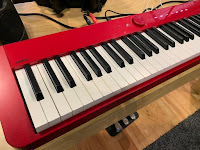 Casio of Japan has been designing and producing digital pianos and keyboards for decades and has always been known for offering a lot of “bang for the buck” in the lower price ranges near or under $1000. So it comes as no surprise to me that Casio has “upped their game” with this new series (PX-S1100, PX-S3100) in a way that no other digital piano company has done before them in this price range. In fact, Casio has designed new innovations into the PX-S1100 that are pretty amazing given the low discount price of this model in the US. The PX-S1100 (aka: S1100) is also available in both gloss top white with white cabinet and also gloss top black with black cabinet. In addition to that, Casio has a special edition gloss topred color cabinet that is impressive which no other brand or model has.
Casio of Japan has been designing and producing digital pianos and keyboards for decades and has always been known for offering a lot of “bang for the buck” in the lower price ranges near or under $1000. So it comes as no surprise to me that Casio has “upped their game” with this new series (PX-S1100, PX-S3100) in a way that no other digital piano company has done before them in this price range. In fact, Casio has designed new innovations into the PX-S1100 that are pretty amazing given the low discount price of this model in the US. The PX-S1100 (aka: S1100) is also available in both gloss top white with white cabinet and also gloss top black with black cabinet. In addition to that, Casio has a special edition gloss topred color cabinet that is impressive which no other brand or model has.
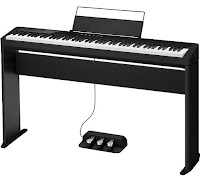 If you like the way this red color looks then it could be a good option for you. The red color is also the same price as the black or white colors which is surprising because typically “special edition” colors are more money in some cases. This PX-S1100 in the black or white color is also available with optional furniture stand and triple pedal unit. The PX-S1100 also is also one of the lowest priced digital pianos that Casio has which can be controlled by a proprietary app called “Casio Music Space” and that app can be used on your iPad or Android. It’s a really cool way to control many of the digital features from the color touch screen of your digital tablet.
If you like the way this red color looks then it could be a good option for you. The red color is also the same price as the black or white colors which is surprising because typically “special edition” colors are more money in some cases. This PX-S1100 in the black or white color is also available with optional furniture stand and triple pedal unit. The PX-S1100 also is also one of the lowest priced digital pianos that Casio has which can be controlled by a proprietary app called “Casio Music Space” and that app can be used on your iPad or Android. It’s a really cool way to control many of the digital features from the color touch screen of your digital tablet.Before I talk about some of the impressive things this portable piano can do, let me just say up front that before I tried this model I really did not expect any changes in this model from previous model PX-S1000 because the PX-S1000 had so many nice features in it already and was a popular seller for Casio. The piano sound was already impressive for its price along with the pedaling sustain response as well as connectivity and features. Casio has made some notable upgrades in the new PX-S1100 over the previous model PX-1000 and here is a short list of those changes and upgrades:
5 MAJOR IMPROVEMENTS OF PX-S1100
5. Cabinet design element changes – Casio improved the “look” of the cabinet with a more upgraded appearance with it comes to font lettering colors and logo placement along with a couple of button changes. These changes are more subtle but gives the PX-S1100 a classier and more elegant appearance.
 When people are shopping for new digital pianos, besides the obvious differences in design and aesthetics (the looks) of a digital piano, it’s mostly about what’s “under the hood” that really counts in terms of the most realistic piano playing experience a person can get in a certain price range. It has to do with the piano sound technology, the key action realism as compared to a real acoustic piano, and the pedaling response as compared to a real acoustic piano. It also has to do with the internal speaker system of that digital piano and how well it can put out volume and sonic quality of sound. Getting all of those aspects to mix together in a way that “works well,” particularly in a low price range under $1000 and especially near or at $500 price range is no easy task in the world of digital pianos…at least until now.
When people are shopping for new digital pianos, besides the obvious differences in design and aesthetics (the looks) of a digital piano, it’s mostly about what’s “under the hood” that really counts in terms of the most realistic piano playing experience a person can get in a certain price range. It has to do with the piano sound technology, the key action realism as compared to a real acoustic piano, and the pedaling response as compared to a real acoustic piano. It also has to do with the internal speaker system of that digital piano and how well it can put out volume and sonic quality of sound. Getting all of those aspects to mix together in a way that “works well,” particularly in a low price range under $1000 and especially near or at $500 price range is no easy task in the world of digital pianos…at least until now.
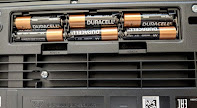 Besides the operation and design of the PX-S1100 being so unique is the fact that it is so compact, even by current standards. It measures 52″ wide x 9″ deep x 4″ high and weighs just 24.7 lbs without the lightweight music rack that comes with it. Another very unique thing this model does in terms of its operation is that it can be powered not only by the power adapter that comes with the piano, but also by 6 AA batteries! Yes, you heard that right…batteries! It’s hard to believe that an 88-key fully piano-weighted key action digital piano with all that this piano has to offer also allows you to go anywhere you want to without restriction. To the park (I’ve done it), to the beach, camping, in your backyard, out on safari, in the street, wherever you happen to be…because of this new battery powered feature.
Besides the operation and design of the PX-S1100 being so unique is the fact that it is so compact, even by current standards. It measures 52″ wide x 9″ deep x 4″ high and weighs just 24.7 lbs without the lightweight music rack that comes with it. Another very unique thing this model does in terms of its operation is that it can be powered not only by the power adapter that comes with the piano, but also by 6 AA batteries! Yes, you heard that right…batteries! It’s hard to believe that an 88-key fully piano-weighted key action digital piano with all that this piano has to offer also allows you to go anywhere you want to without restriction. To the park (I’ve done it), to the beach, camping, in your backyard, out on safari, in the street, wherever you happen to be…because of this new battery powered feature.
The speaker system is super powerful so there is no problem hearing the piano and it has a noticeably good quality sound going through its internal sound system even when on batteries…but I will talk about that in more detail a bit later in this review. When using batteries the piano can be powered up to 4 hours of continuous operation which is a very long time given what this piano is and the power it would normally require if it were any other brand. Since the PXS has an “auto-shutoff” for its battery power, if you don’t play the piano for 6 minutes then the power will automatically shut off during battery power, although you can disable that auto shutoff if you like. All I can say is…how cool is that!
 Another really cool new feature not previously available on any digital piano model in this price range under $1000 (especially at or near $699) is the inclusion of Bluetooth audio wireless and Bluetooth MIDI wireless capability using a special new “dongle” that plugs into a USB slot on the back of the piano. Many of us have and use Bluetooth audio with our personal devices in that you can wirelessly transmit music or any other sound from your personal device (phone, tablet, etc) to an external set of stereo (or mono) speakers without needing any cables. This enhances your listening experience when viewing and/or listening to videos, music, etc. With the PX-S1100 this Bluetooth feature is great for a number of reasons such as learning new songs from your digital music library going directly through the piano internal speaker system so you can play along with them whether using the internal speakers of the piano or using headphones in the piano.
Another really cool new feature not previously available on any digital piano model in this price range under $1000 (especially at or near $699) is the inclusion of Bluetooth audio wireless and Bluetooth MIDI wireless capability using a special new “dongle” that plugs into a USB slot on the back of the piano. Many of us have and use Bluetooth audio with our personal devices in that you can wirelessly transmit music or any other sound from your personal device (phone, tablet, etc) to an external set of stereo (or mono) speakers without needing any cables. This enhances your listening experience when viewing and/or listening to videos, music, etc. With the PX-S1100 this Bluetooth feature is great for a number of reasons such as learning new songs from your digital music library going directly through the piano internal speaker system so you can play along with them whether using the internal speakers of the piano or using headphones in the piano.CASIO MUSIC SPACE APP
The final thing that sets this model apart from all previous portable Casio digital pianos as well as most of its competition is the new proprietary Casio Music Space app for tablets and mobile devices which allows you to control the various aspects and features of the PX-S1100 from your color touch screen in your device.The larger the color touch screen in your device, the easier it will be in navigation the functions & features in the app. This makes the PX-S1100 extremely intuitive and for the first time lets the user access functions that have been previously been very difficult to find using the conventional function button while touching a preset key by looking at a menu in the owners manual.
This traditional method made it so that you really did not want to find or use those cool features because the interface was so confusing overall. But with this new easy-to-use app that Casio designed for these pianos, now even the most obscure feature that you may not have tried before is quickly accessible from your color touch screen on your tablet device when then makes it more likely you will use that function or feature and find out how cool it is and what you may have been missing out on before.
 Beyond that, some of the new PX-S1100 sound and performance features are all brand new and not found in previous models, and they can impact your music in some very cool and useful ways.So I found it really great to be able to trigger these performance features so intuitively and easily from my iPad using the “Casio Music Space” app. Whether you are selecting one of the 18 instrument tones in the piano, layering 2 of them, splitting 2 of them (bass & another sound), adding special reverb and ambiance effects to your sound, changing volumes on each sound, editing the piano sound to be even more realistic and natural, using the 3-D surround sound system in a customizable way, making and playing back a recording you’ve done, whatever you want to do you can do it from this new app.
Beyond that, some of the new PX-S1100 sound and performance features are all brand new and not found in previous models, and they can impact your music in some very cool and useful ways.So I found it really great to be able to trigger these performance features so intuitively and easily from my iPad using the “Casio Music Space” app. Whether you are selecting one of the 18 instrument tones in the piano, layering 2 of them, splitting 2 of them (bass & another sound), adding special reverb and ambiance effects to your sound, changing volumes on each sound, editing the piano sound to be even more realistic and natural, using the 3-D surround sound system in a customizable way, making and playing back a recording you’ve done, whatever you want to do you can do it from this new app.
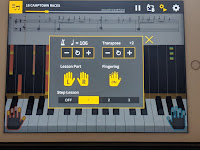 The Casio Music Space app also does things that the PX-S1100 cannot do without the app including providing a fun piano learning game experience using a dedicated portion of the app to activate a “MIDI Player” similar to the Synthesia game app for keyboards. You can import the built-in songs in the piano and play them through this MIDI game so that you can visually see “streaming colors” indicating what keys to press on the piano so that you can play along with the song. There are all kinds of functions & features in this game app to control the songs and how those songs will be playing along with the live interaction you can have with them. This is a very cool part of the Music Space app and definitely lots of fun for the whole family no matter what age or playing skill level you are.
The Casio Music Space app also does things that the PX-S1100 cannot do without the app including providing a fun piano learning game experience using a dedicated portion of the app to activate a “MIDI Player” similar to the Synthesia game app for keyboards. You can import the built-in songs in the piano and play them through this MIDI game so that you can visually see “streaming colors” indicating what keys to press on the piano so that you can play along with the song. There are all kinds of functions & features in this game app to control the songs and how those songs will be playing along with the live interaction you can have with them. This is a very cool part of the Music Space app and definitely lots of fun for the whole family no matter what age or playing skill level you are.
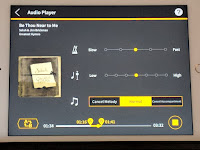 system. You can also wirelessly connect that song player in the Music Space app to the piano using the Bluetooth Audio feature so that you do not need any cables for connection….completely wireless.
system. You can also wirelessly connect that song player in the Music Space app to the piano using the Bluetooth Audio feature so that you do not need any cables for connection….completely wireless.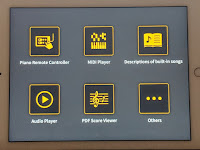
 that…but I was expecting this to happen so it wasn’t a surprise to me. You can also apply the special DSP effects which is called ‘sound mode’ (reverb, echo, 3-D sound, etc) within the piano directly to the song playing back so you can enhance the natural sound that you might find in a recording studio using more sophisticated effects.
that…but I was expecting this to happen so it wasn’t a surprise to me. You can also apply the special DSP effects which is called ‘sound mode’ (reverb, echo, 3-D sound, etc) within the piano directly to the song playing back so you can enhance the natural sound that you might find in a recording studio using more sophisticated effects.CASIO PX-S1100 KEY ACTION
OK…now that I have discussed the things I think are very unique with regard to this new Casio piano model, I want to move onto the #1 most important thing that piano teachers (like myself), piano players (like myself), and music students are most concerned about when shopping for a new digital piano…and that is the key action. It reality all the “bells & whistles” that a digital piano offers is meaningless at the end of the day as compared to how the piano responds and plays as a “piano.” There are plenty of digital pianos out there with all kinds of “cool features” in a variety of price ranges, but when it comes to reproducing a pleasing piano playing experience, some of those digital pianos are good, some are average, and some are just bad…and I have done a number of reviews on the poor quality models and bad ones….and most of those pianos are the “off-brand names.”
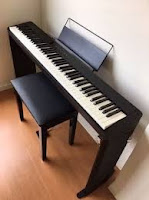 The key action in the new PX-S1100 is a new & improved design by Casio being currently offered in the new compact PXS models only and not any other model of Casio digital pianos.The key action is improved and upgraded in a number of ways that are noticeable to me including the key weight, responsiveness. The overall balance between the black & white keys going up and down the keyboard is good but there is a bigger disparity in down-weight force needed to play the keys. While the white keys are fairly standard in terms of weight, the black keys are much lighter when playing near the tips of the keys so it takes less finger force to play the black keys as opposed to the white keys. But as you move your fingers forward on the black keys then they start to get heavier because of the fulcrum point.
The key action in the new PX-S1100 is a new & improved design by Casio being currently offered in the new compact PXS models only and not any other model of Casio digital pianos.The key action is improved and upgraded in a number of ways that are noticeable to me including the key weight, responsiveness. The overall balance between the black & white keys going up and down the keyboard is good but there is a bigger disparity in down-weight force needed to play the keys. While the white keys are fairly standard in terms of weight, the black keys are much lighter when playing near the tips of the keys so it takes less finger force to play the black keys as opposed to the white keys. But as you move your fingers forward on the black keys then they start to get heavier because of the fulcrum point.
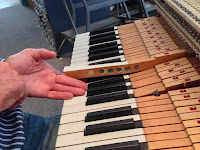 I think that it is important to note that I have played literally thousands of acoustic upright & grand pianos in my long music career including Fazioli, Steinway, Bosendorfer, Kawai, Yamaha, Bechstein, Young Chang, Samick, Boston, Pearl River, Essex, Kimball, Story & Clark, and many more so I know how weighted keys feel and how they are supposed to move. The PX-S1100 does have slightly shorter keys (the part of the key you cannot see that goes beyond the visible key and underneath the piano panel behind the key) than other digital pianos and therefore the key weight towards the very backs of the white keys and black keys is heavier (firmer) and therefore the keys are a bit harder to press down when playing flats & sharps towards the “backs” of the keys.
I think that it is important to note that I have played literally thousands of acoustic upright & grand pianos in my long music career including Fazioli, Steinway, Bosendorfer, Kawai, Yamaha, Bechstein, Young Chang, Samick, Boston, Pearl River, Essex, Kimball, Story & Clark, and many more so I know how weighted keys feel and how they are supposed to move. The PX-S1100 does have slightly shorter keys (the part of the key you cannot see that goes beyond the visible key and underneath the piano panel behind the key) than other digital pianos and therefore the key weight towards the very backs of the white keys and black keys is heavier (firmer) and therefore the keys are a bit harder to press down when playing flats & sharps towards the “backs” of the keys.
 piano don’t have much weight to them at all. It’s the extra weights placed inside the key (in acoustic type piano keys) or attached to the keys or within the key action (in digital pianos) that give the plastic and/or wooden keys their complete weight.
piano don’t have much weight to them at all. It’s the extra weights placed inside the key (in acoustic type piano keys) or attached to the keys or within the key action (in digital pianos) that give the plastic and/or wooden keys their complete weight.However, key weight (the finger force it takes to press the key down) is measured near the top front of the key, top middle of the key, and top back of the key. For some of you out there these extra “details” about keys may not be of interest to you and that is fine. But for other people you may enjoy knowing about these details which I am happy to explain.
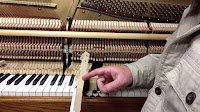 As a real example, the down-weight of middle C# key (black key) measured in the middle of the key is about 60 grams of down-weight pressure or force it takes to press down the key. The down-weight pressure on the same key measured in the same place (middle of key) on the Casio PX-S1100 is approx 65 grams. But if you take that same measurement on the popular Yamaha P515 portable digital piano
As a real example, the down-weight of middle C# key (black key) measured in the middle of the key is about 60 grams of down-weight pressure or force it takes to press down the key. The down-weight pressure on the same key measured in the same place (middle of key) on the Casio PX-S1100 is approx 65 grams. But if you take that same measurement on the popular Yamaha P515 portable digital piano
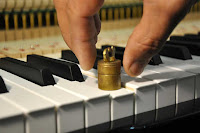 The Yamaha digital piano key action is noticeably heavier in that key position not only against regular acoustic upright and grand pianos, but also as compared to Korg, Kawai, and Roland digital pianos with Roland needing more key pressure than Kawai, Korg, or Casio. On a real grand piano the amount of finger pressure needed to press down the key is even less than upright acoustic pianos. In other words, the keys are even lighter and take less effort to press down on grand pianos as opposed to upright pianos in the middle of the key and also towards the fronts of the keys.
The Yamaha digital piano key action is noticeably heavier in that key position not only against regular acoustic upright and grand pianos, but also as compared to Korg, Kawai, and Roland digital pianos with Roland needing more key pressure than Kawai, Korg, or Casio. On a real grand piano the amount of finger pressure needed to press down the key is even less than upright acoustic pianos. In other words, the keys are even lighter and take less effort to press down on grand pianos as opposed to upright pianos in the middle of the key and also towards the fronts of the keys.
The bottom line for this new key action is that although the PX-S1100 has (overall) a very playable “feel” and the overall weight and movement of the keys is comfortable and responsive, if you are primarily a classical pianist and/or play lots of sharps and flats towards the very backs of the keys then this key action may not be as comfortable and responsive for you as you may need. I hope this all makes sense to you:)
Is this new Casio key action perfect and exactly like a real piano?…definitely not and no one should expect that in this price range. For me this PX-S1100 model is quite responsive especially with having their new “High Definition” key senor electronics for good note repetition reaction and Casio has added a new proprietary key technology that allows each key to have a slightly different weighted feel offering linear weighted keys which they have never had before. So the increase and decrease of the graduated weight of the keys as you go up and down the keyboard (Casio calls their new key-action “smart scaled”) is something that no other digital piano manufacturer has right now in this lower price range.
 Beyond that, the synthetic ivory & ebony key-tops feel good under the fingers and the texture of those keys has been improved over previous Casio portable digital pianos so that that synthetic material can help absorb sweat from the fingers. Another thing I noticed about the key action is that it’s somewhat quieter than previous models when the keys move up & down. Many piano want or need the key action to be as quiet as possible while still moving up & down correctly with good “key travel.” I can say that although this key action is not “noiseless” when the keys move, it is definitely quieter than before, and there is no thud, thumping, or knocking sounds when the keys are going down.
Beyond that, the synthetic ivory & ebony key-tops feel good under the fingers and the texture of those keys has been improved over previous Casio portable digital pianos so that that synthetic material can help absorb sweat from the fingers. Another thing I noticed about the key action is that it’s somewhat quieter than previous models when the keys move up & down. Many piano want or need the key action to be as quiet as possible while still moving up & down correctly with good “key travel.” I can say that although this key action is not “noiseless” when the keys move, it is definitely quieter than before, and there is no thud, thumping, or knocking sounds when the keys are going down.
STEREO GRAND PIANO SOUND
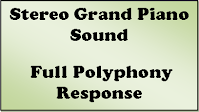 The piano sound authenticity is certainly the 2nd most important aspect of any piano and the PXS1100 has a brand new piano sound chip in it that no other portable or furniture cabinet Casio piano currently has had. This new sound piano sound chip has been improved in a number of ways over previous models and all other Casio portable digital pianos. First of all, their are 3 main acoustic piano tones in the PX-S1100 with one being the concert sound, a brighter piano sound, and a mellow piano sound.
The piano sound authenticity is certainly the 2nd most important aspect of any piano and the PXS1100 has a brand new piano sound chip in it that no other portable or furniture cabinet Casio piano currently has had. This new sound piano sound chip has been improved in a number of ways over previous models and all other Casio portable digital pianos. First of all, their are 3 main acoustic piano tones in the PX-S1100 with one being the concert sound, a brighter piano sound, and a mellow piano sound.
There are also some other acoustic piano sounds but the 3 main ones are what most people will be using. The dynamic tonal range and organic nature of these 3 piano tones are very impressive and more expressive than ever before. From very soft to very loud and everywhere in-between, playing the piano sounds, especially the concert Grand sound is so dynamically rich in tone that it’s hard to believe Casio could do that in a $699 portable digital piano.
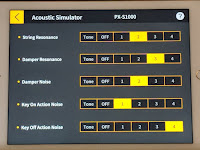
The nuanced tones at every pressure level when playing the keys are impressive and you can even hear the “virtual strings” resonate and vibrate in ways that $1500 digital pianos have a hard time doing and you can hear what are known as sympathetic overtones and hammer noises & resonances, just like the real thing. With the Music Space app using its “acoustic simulator” features, you can control the amount of those organic vibrations & resonances you hear.So if the sound is a little bit “too much” for you in terms of all those organic tones that Casio has captured in their piano sound engine, you can easily reduce those organic elements or even increase them if you want more of it. The piano tone (overall) is very natural even when coming through it’s own PX-S1100 internal speakers. Many portable digital pianos with internal speakers in this price range have weak bass response. But in the case of the PX-S1100 it has surprisingly good bass response and sounds fairly full, especially given the small size of the cabinet. So that’s a big “plus” for this model.
3D SOUND & SPECIAL REVERB EFFECTS
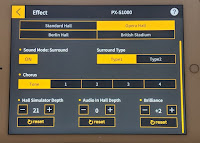 In addition to the 3-D surround sound, the PX-S1100 has a mode for adding special effects to the sound, such as reverb. All digital pianos have a reverb effect so that is nothing new. However none of these other portable digital pianos under $1500 have a DSP reverb mode that takes a basic reverb/echo effect and brings it to another level that you would find in professional recording studios. Casio has recreated the actual environmental room effect of specific types buildings and/or places that a pro concert might be held at or a pro singer might be singing at such as an Opera Hall, Cathedral, Stadium, etc. That sound mode in the PX-S1100 is called “Hall simulator.”
In addition to the 3-D surround sound, the PX-S1100 has a mode for adding special effects to the sound, such as reverb. All digital pianos have a reverb effect so that is nothing new. However none of these other portable digital pianos under $1500 have a DSP reverb mode that takes a basic reverb/echo effect and brings it to another level that you would find in professional recording studios. Casio has recreated the actual environmental room effect of specific types buildings and/or places that a pro concert might be held at or a pro singer might be singing at such as an Opera Hall, Cathedral, Stadium, etc. That sound mode in the PX-S1100 is called “Hall simulator.”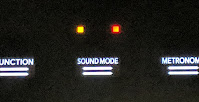 When you activate the hall simulator system you then get professional sound environmental reverb effects recreating these different places I just mentioned and the result is a piano sound that really does become more alive because it makes piano sound become even less artificial and more organic. You can switch on the hall simulator effect and the 3-D surround sound effect at the same time and then when you play some piano on the keyboard you just want to say…WOW, that’s really cool!
When you activate the hall simulator system you then get professional sound environmental reverb effects recreating these different places I just mentioned and the result is a piano sound that really does become more alive because it makes piano sound become even less artificial and more organic. You can switch on the hall simulator effect and the 3-D surround sound effect at the same time and then when you play some piano on the keyboard you just want to say…WOW, that’s really cool!
NATURAL SOUND TECHNOLOGY
So…when it comes to the piano sound on this new model I am not suggesting it sounds exactly like a grand piano because no digital piano can actually do that. However, the piano sounds in the PX-S1100 are very good digital recordings of grand pianos but those sounds are coming out of speakers and the key action that is triggering those piano sounds are not grand piano keys with all the natural organics of a real grand piano. But for the uninitiated and those people who have not had a lot of playing experience on a real top quality grand piano like I have (I’ve played literally thousands of grand pianos in my music career), you might be fooled into thinking the sound in this Casio PX-S1100 actually is a grand piano because it’s that good, especially when listening through a good pair of stereo headphones or connecting to some good monitor speakers. With Roland, for instance,
PEDAL RESPONSE TECHNOLOGY & CONNECTIVITY
 At this point in my (lengthy) review, if you are still with me I want to talk about the pedals. All pianos have pedals and without them there would not be a piano. That’s because the pedals, particularly the right damper/sustain pedal is so
At this point in my (lengthy) review, if you are still with me I want to talk about the pedals. All pianos have pedals and without them there would not be a piano. That’s because the pedals, particularly the right damper/sustain pedal is so 
important for holding and sustaining the piano sound so that you can play your song with all the notes always producing a staccato sound where the note is heard and then quickly shuts off when you let go of the key. You definitely want notes to sustain their sound by holding down the damper/sustain pedal for a period of time depending on the notes and chords you are playing at any given moment in the song. damper pedaling is critical to the outcome and realism of any song you play on the piano. Other instruments like harpsichords, organs, etc do not have sustain pedals because the sound does not operate that way. On a real piano (upright or grand piano) one of the hallmarks of any piano sound in that piano is how well the damper pedal can sustain and hold that tone and keep up the volume of that piano sound as it is sustain and then decaying away over time.
 In other words, you should be able to hold the sustain pedal down, play a key on the keyboard maybe in the middle of it, and that piano sound should hold on and sustain naturally for about 15-20 seconds (or even more depending on the piano) until you do not hear it any more. The bass notes have twice as long of sustain time and the high notes have less sustain time than in the middle of the keyboard. With digital pianos almost all of them have had problems with being able to sustain notes for longer periods of time like real pianos can. For the first time Casio now has a natural organic note sustain that is a long and as loud as a real acoustic piano and it also decays and fades out like a real piano.
In other words, you should be able to hold the sustain pedal down, play a key on the keyboard maybe in the middle of it, and that piano sound should hold on and sustain naturally for about 15-20 seconds (or even more depending on the piano) until you do not hear it any more. The bass notes have twice as long of sustain time and the high notes have less sustain time than in the middle of the keyboard. With digital pianos almost all of them have had problems with being able to sustain notes for longer periods of time like real pianos can. For the first time Casio now has a natural organic note sustain that is a long and as loud as a real acoustic piano and it also decays and fades out like a real piano.
What this does for the piano is to offer the better intermediate or advanced player the ability to play music in a way that they can do on a real piano…and that’s the point. Even the beginner sounds better because the longer, bolder piano sustain ability “fills in the holes” just by pressing and holding the sustain pedal. It’s like adding thousands of new colors to your pallet, it all just comes out more beautifully…that’s what great pedal sustain is able to do for the pianist. The more natural the piano sound, key action, and pedaling is on a digital piano, the more natural your music will sound and the more you will enjoy it…and that should be the goal.
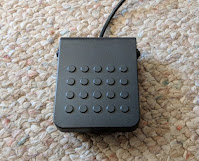 One of the normal downsides of using a damper/sustain pedal on a Casio digital piano is that the pedal included with the PXS pianos are small, square, very lightweight plastic pedals that don’t stay in one place and move around on the ground when you are using it. This pedal work OK and is included free with this model, but it is not something I would recommend for any long term use. So the solution for that is to purchase a heavy duty full size, better weighted metal pedal for about $30-$40 and then the pedaling experience will be much nicer. However, that still only gives you one pedal, and since there are 3 pedals on a piano, Casio has designed and built a new proprietary tripe pedal unit that is portable and plugs directly into the PX-S1100.
One of the normal downsides of using a damper/sustain pedal on a Casio digital piano is that the pedal included with the PXS pianos are small, square, very lightweight plastic pedals that don’t stay in one place and move around on the ground when you are using it. This pedal work OK and is included free with this model, but it is not something I would recommend for any long term use. So the solution for that is to purchase a heavy duty full size, better weighted metal pedal for about $30-$40 and then the pedaling experience will be much nicer. However, that still only gives you one pedal, and since there are 3 pedals on a piano, Casio has designed and built a new proprietary tripe pedal unit that is portable and plugs directly into the PX-S1100.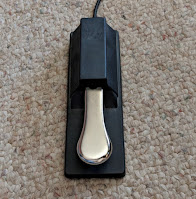
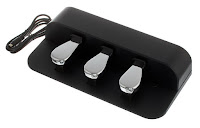
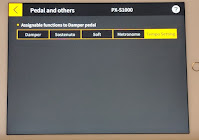 u could take the PX-S1100 with you somewhere outside where there is no power, set it up on a portable stand, connect the triple pedal unit (or a single pedal), and play the PX-S1100 while powered with six AA batteries.Given the great sound of the PX-S1100 coming through its own internal speaker system (I will talk specifically about the internal speakers a bit later) and the fact that the piano sound authenticity combined with a very playable piano style key action and responsive pedaling system is so good, you can have musical enjoyment wherever you are and sound like a pro doing it.
u could take the PX-S1100 with you somewhere outside where there is no power, set it up on a portable stand, connect the triple pedal unit (or a single pedal), and play the PX-S1100 while powered with six AA batteries.Given the great sound of the PX-S1100 coming through its own internal speaker system (I will talk specifically about the internal speakers a bit later) and the fact that the piano sound authenticity combined with a very playable piano style key action and responsive pedaling system is so good, you can have musical enjoyment wherever you are and sound like a pro doing it.INSTRUMENT SOUNDS AND FEATURES
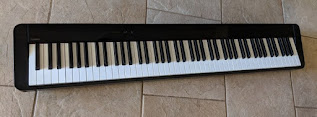 When it comes to instrument sounds, effects, functions, and features, the PX-S1100 simple appearance is very deceptive. From the outside it looks like it does nothing when the power is off because as I have mentioned earlier, there are no function buttons other than a volume knob and a sleek flush mounted power button. So when you power up the keyboard then some functions appear on the smooth black surface and light up so you can see and activate them. But that appears to be very deceptive as well because by the looks of things from the piano control panel it seems as if there are only two instrument sounds showing, acoustic grand piano and electric piano, and that’s it.
When it comes to instrument sounds, effects, functions, and features, the PX-S1100 simple appearance is very deceptive. From the outside it looks like it does nothing when the power is off because as I have mentioned earlier, there are no function buttons other than a volume knob and a sleek flush mounted power button. So when you power up the keyboard then some functions appear on the smooth black surface and light up so you can see and activate them. But that appears to be very deceptive as well because by the looks of things from the piano control panel it seems as if there are only two instrument sounds showing, acoustic grand piano and electric piano, and that’s it. However, under that “hood” there are actually 18 instrument sounds (17 + 1 string bass tone for split mode) which any one of the 17 instrument tones can be selected along with being able to layer/mix any of those sounds with another 17 sounds in a different menu, although both sets (menus) of sounds are the same.
However, under that “hood” there are actually 18 instrument sounds (17 + 1 string bass tone for split mode) which any one of the 17 instrument tones can be selected along with being able to layer/mix any of those sounds with another 17 sounds in a different menu, although both sets (menus) of sounds are the same. 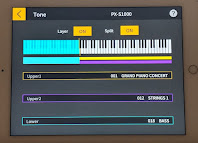 You can layer any one sound in the first menu with any one sound in the second menu such as concert piano with stereo strings or harpsichord with pipe organ, etc. You can also control the volume independently on both sounds which is very convenient and useful in balancing your layered sound. There is also a “split” function on the keyboard which allows for an automatic string bass tone on the left-hand split on a particular preset note and then any sound you choose for the right hand such as piano which is fun if you want to play a bit of Jazz bass/piano.. You can also select 2 sounds to be layered on the right hand along with a bass sound on the left-hand. The 11 sounds + 1 bass tone in this model are all quite good and noticeably improved over past Casio models including a variety of acoustic & electric pianos, orchestral strings, jazz, pop, and church organs, harpsichord and vibes.
You can layer any one sound in the first menu with any one sound in the second menu such as concert piano with stereo strings or harpsichord with pipe organ, etc. You can also control the volume independently on both sounds which is very convenient and useful in balancing your layered sound. There is also a “split” function on the keyboard which allows for an automatic string bass tone on the left-hand split on a particular preset note and then any sound you choose for the right hand such as piano which is fun if you want to play a bit of Jazz bass/piano.. You can also select 2 sounds to be layered on the right hand along with a bass sound on the left-hand. The 11 sounds + 1 bass tone in this model are all quite good and noticeably improved over past Casio models including a variety of acoustic & electric pianos, orchestral strings, jazz, pop, and church organs, harpsichord and vibes.
OVER 50 IMPRESSIVE FEATURES INCLUDING RECORDING & PLAYBACK
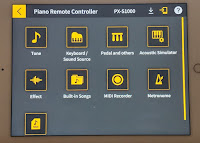 Within the piano there are there approx 50 functions which are intuitively accessed by the Casio Music Space app and there are also approx 50 variations of those 50 functions to give you more control over how the sound comes out. You can also more easily access features, songs, 2 track recording & playback (right-hand, left-hand), metronome, transpose, 5 levels of touch sensitivity control, music games, audio song file importing, and a host of other very cool things you can do with the PX-S1100. So all of these things can help you make music in ways that not only lets you sound better on this model than any other portable digital piano out there under $1000 in my opinion, but you get to do musical things that just makes piano playing more fun, more enjoyable, and allows you to customize your piano and instrumental tones in ways other digital pianos just cannot do right now.
Within the piano there are there approx 50 functions which are intuitively accessed by the Casio Music Space app and there are also approx 50 variations of those 50 functions to give you more control over how the sound comes out. You can also more easily access features, songs, 2 track recording & playback (right-hand, left-hand), metronome, transpose, 5 levels of touch sensitivity control, music games, audio song file importing, and a host of other very cool things you can do with the PX-S1100. So all of these things can help you make music in ways that not only lets you sound better on this model than any other portable digital piano out there under $1000 in my opinion, but you get to do musical things that just makes piano playing more fun, more enjoyable, and allows you to customize your piano and instrumental tones in ways other digital pianos just cannot do right now.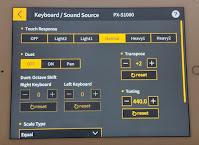
My point is…don’t be deceived by the simple design and looks when the piano is off or even when it is powered on. When you use the Casio Music Space app on your personal device, that app will open up a world of technology which can be used with this piano which anyone from 3 years old to 93 years old can easily learn to do. It’s interesting that you can also access these other features directly from the piano itself using a function button and then looking in the owners manual to find the correct key out of all the 88 keys on the keyboard which will then trigger that function you want. But that way of getting to those features is definitely not intuitive and requires a lot of memorization and tends to be tedious to use. The end result is that people usually avoid using those extra features because it’s not easy and intuitive to use when you have to rely on such an antiquated operating system like that one.
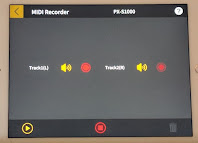 It’s really all about using helpful technology (which I am a big supporter of) to make your music playing experience as exciting and personal as it can be, and this is the first Casio portable digital piano that can do that through an app on the color touch screen of your personal device (phone, tablet, etc). Don’t have a personal device, especially a tablet like an iPad or Android?
It’s really all about using helpful technology (which I am a big supporter of) to make your music playing experience as exciting and personal as it can be, and this is the first Casio portable digital piano that can do that through an app on the color touch screen of your personal device (phone, tablet, etc). Don’t have a personal device, especially a tablet like an iPad or Android?
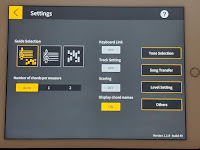
Then I recommend you eventually get one if you are going to purchase the PX-S1100…it’s definitely worth it. It’s still somewhat easy to trigger the 17 instrument sound from the piano control panel and keys without the need of an iPad/tablet as well as the recorder, metronome, and surround sound. But it’s much easier and more intuitive to do it from a tablet color touch screen using the Casio Music Space app.
ADDITIONAL PX-S1100 FEATURES INCLUDING TOUCH CONTROL AND SOUND FUNCTIONS
 I think it’s important to reiterate that the PXS series pianos as well as other brands of portable and cabinet digital pianos have a similar setup to the PX-S1100 when wanting to use the additional built-in features such as changing transpose key, brightness, touch sensitivity control, and other functions. You have to look in the owners manual at a chart to see where those functions are located in piano by manually pressing a specific white or black key on the keyboard while holding down the function or sound mode button.
I think it’s important to reiterate that the PXS series pianos as well as other brands of portable and cabinet digital pianos have a similar setup to the PX-S1100 when wanting to use the additional built-in features such as changing transpose key, brightness, touch sensitivity control, and other functions. You have to look in the owners manual at a chart to see where those functions are located in piano by manually pressing a specific white or black key on the keyboard while holding down the function or sound mode button. Perhaps you would want to change the brilliance control of the PX-S1100 so you can brighten up or mellow out the sound which customizes the piano tone to your ear as some people like an overall more mellow tone and others like a clearer, crisper, sharper tone. This is useful whether you are playing the piano sound, organ sound, or other instrument tones. The reverb and ambiance controls can make your music sound even more realistic and you can even control the depth or amount of that ambiance using internal controls.
Perhaps you would want to change the brilliance control of the PX-S1100 so you can brighten up or mellow out the sound which customizes the piano tone to your ear as some people like an overall more mellow tone and others like a clearer, crisper, sharper tone. This is useful whether you are playing the piano sound, organ sound, or other instrument tones. The reverb and ambiance controls can make your music sound even more realistic and you can even control the depth or amount of that ambiance using internal controls. But all of that is likely going to stay unused or hidden within the piano because most people don’t want to deal with memorizing which black or white key on the 88 keys triggers that function (see white chart above left pic) and there is no way to know unless you look in the owners manual each time to see where that feature is located in the chart and then trying to trigger that function by pressing the piano function button and the correct key.
But all of that is likely going to stay unused or hidden within the piano because most people don’t want to deal with memorizing which black or white key on the 88 keys triggers that function (see white chart above left pic) and there is no way to know unless you look in the owners manual each time to see where that feature is located in the chart and then trying to trigger that function by pressing the piano function button and the correct key.PX-S1100 CONNECTIVITY
 However, if all you want is a simple portable digital piano that can instantly let you play piano just by powering up the instrument and playing, then the Casio PX-S1100 can do that too. Simple and clean in design and operation, the PX-S1100 will likely inspire you musically as soon as you start playing it. I also like the fact that this model has lots of great connectivity inside of it which includes 2 full size 1/4″ audio outputs to plug into an external audio system for use in home, in studio, at church, or wherever you may need to connect with external speakers to get a bigger, bolder, more powerful sound. There is a new USB flash drive or Bluetooth wireless dongle input so that you can either save your audio or MIDI recordings to a standard USB flashdrive or play piano MIDI files from a flashdrive, or plug in the included Bluetooth dongle ($80 value) to use Bluetooth audio or MIDI wireless connectivity.
However, if all you want is a simple portable digital piano that can instantly let you play piano just by powering up the instrument and playing, then the Casio PX-S1100 can do that too. Simple and clean in design and operation, the PX-S1100 will likely inspire you musically as soon as you start playing it. I also like the fact that this model has lots of great connectivity inside of it which includes 2 full size 1/4″ audio outputs to plug into an external audio system for use in home, in studio, at church, or wherever you may need to connect with external speakers to get a bigger, bolder, more powerful sound. There is a new USB flash drive or Bluetooth wireless dongle input so that you can either save your audio or MIDI recordings to a standard USB flashdrive or play piano MIDI files from a flashdrive, or plug in the included Bluetooth dongle ($80 value) to use Bluetooth audio or MIDI wireless connectivity. The PX-S1100 also has a USB output to computer, tablet, etc, so that you can connect securely to an external device. Also, there is a proprietary triple pedal input to connect the optional triple pedal unit along with 1 sustain pedal input jack. There are 2 1/8′ stereo headphone jacks located on the right front side of the piano for easy access for plugging in headphones for private practice.
The PX-S1100 also has a USB output to computer, tablet, etc, so that you can connect securely to an external device. Also, there is a proprietary triple pedal input to connect the optional triple pedal unit along with 1 sustain pedal input jack. There are 2 1/8′ stereo headphone jacks located on the right front side of the piano for easy access for plugging in headphones for private practice.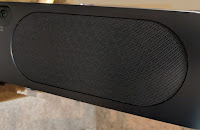 Speaking of the piano internal stereo speaker system, Casio has redesigned their previous internal speaker system they used in previous models and the PXS is the first new models to incorporate this new system in a portable digital piano. The speakers themselves are larger measuring over 6″ at its largest point which is about 1.5″ larger than in previous models, so they put out a bigger, fuller sound than before because of the expansion of the speaker surface area as well as better components. The 8 watt x 8 watt (total 16 watts) stereo amplifiers have been redesigned to offer a cleaner sound with less distortion and although 16 total watts seems like a small amount of power, you will be surprised at actually how much volume and bass response can come out of this piano…it’s a lot!
Speaking of the piano internal stereo speaker system, Casio has redesigned their previous internal speaker system they used in previous models and the PXS is the first new models to incorporate this new system in a portable digital piano. The speakers themselves are larger measuring over 6″ at its largest point which is about 1.5″ larger than in previous models, so they put out a bigger, fuller sound than before because of the expansion of the speaker surface area as well as better components. The 8 watt x 8 watt (total 16 watts) stereo amplifiers have been redesigned to offer a cleaner sound with less distortion and although 16 total watts seems like a small amount of power, you will be surprised at actually how much volume and bass response can come out of this piano…it’s a lot!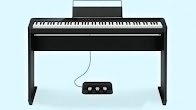 The speaker ports in the PX-S1100 disperse the sound in a new way with sound coming out of the front and sound coming out of the back for better all around sound projection. The back speaker grills which are finished off in a black color are also flush mounted and somewhat disappear into the back of the piano to give the back a sleeker appearance. When you add it all up the new internal stereo sound system is a bonus feature also not expected in this new model.
The speaker ports in the PX-S1100 disperse the sound in a new way with sound coming out of the front and sound coming out of the back for better all around sound projection. The back speaker grills which are finished off in a black color are also flush mounted and somewhat disappear into the back of the piano to give the back a sleeker appearance. When you add it all up the new internal stereo sound system is a bonus feature also not expected in this new model.
 itely makes the piano sound “come alive” with more bass, more volume, and more clarity (and with less distortion at higher volumes) than ever before, and previous and current Casio digital pianos (and some other brands) just cannot do that. It’s important to note that the new “surround sound” feature does not apply to sound coming through headphones or to the sound coming through external speakers. Only through the internal piano speaker system will the surround sound mode work. With regard to the “bass frequencies” and bass power, if you are looking for that grand piano type bass response, you will still not get that with the PXS models.
itely makes the piano sound “come alive” with more bass, more volume, and more clarity (and with less distortion at higher volumes) than ever before, and previous and current Casio digital pianos (and some other brands) just cannot do that. It’s important to note that the new “surround sound” feature does not apply to sound coming through headphones or to the sound coming through external speakers. Only through the internal piano speaker system will the surround sound mode work. With regard to the “bass frequencies” and bass power, if you are looking for that grand piano type bass response, you will still not get that with the PXS models.CABINET COLORS, ACCESSORIES, & WARRANTY
The PXS series is normally available in both black or white cabinet finishes and come with a matching music rack that will support your sheet music or books. The PX-S1100 comes with the single plastic sustain pedal and power adapter and Casio makes a nice looking furniture type stand called the CS68 which sells for $159 discount price on-line. The stand is nice looking, supports the piano so the piano can screw down to the stand, and with the optional triple pedal selling for about $119, you would then have a complete home setup.
 You can also just purchase a lightweight portable x-style adjustable stand on-line for about $40-$50 which can be a more practical way of supporting the piano depending on your needs and budget. Overall, no matter what accessories you might be purchasing for the piano or how you will be using this instrument, you’ll likely be very happy with the purchase. There are a couple of lower priced entry level Casio portable digital pianos out there including the CDP models, but they don’t come close to the PX-S1100 for what it does and the price difference is minimal. The PX-S1100 comes with a Casio full 3-year factory warranty covering both parts and labor, so it’s well protected.
You can also just purchase a lightweight portable x-style adjustable stand on-line for about $40-$50 which can be a more practical way of supporting the piano depending on your needs and budget. Overall, no matter what accessories you might be purchasing for the piano or how you will be using this instrument, you’ll likely be very happy with the purchase. There are a couple of lower priced entry level Casio portable digital pianos out there including the CDP models, but they don’t come close to the PX-S1100 for what it does and the price difference is minimal. The PX-S1100 comes with a Casio full 3-year factory warranty covering both parts and labor, so it’s well protected.
Casio also makes custom gig bag for this model which fits it perfectly and is very robust and nicely padded as compared to past Casio gig bags for other portable digital pianos. There are a couple nice sized pockets on the gig bag, a comfortable handle, sturdy full length zipper, and a couple of full length straps attached to the bag.
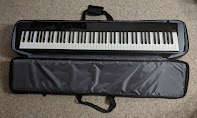 The bag itself is not heavy but it seems to be constructed very well and the piano sits securely inside without wiggle room, and that is a very good thing. $179 may seem like a lot to pay for a “gig bag,” but I believe it will be very difficult to find a generic one out there that actually fits this “slim-line” model correctly while being robust. I think this gig bag is definitely worth the price and if you are going to travel with the piano at all, then I recommend you invest in this new gig bag to protect it. I also recommend that you eventually upgrade (sooner or later) to the better metal full length sustain pedal or triple pedal unit to get a more stable and better manageable pedal playing experience, which is no as important for first time beginner students but it will be necessary as you develop your piano playing skills.
The bag itself is not heavy but it seems to be constructed very well and the piano sits securely inside without wiggle room, and that is a very good thing. $179 may seem like a lot to pay for a “gig bag,” but I believe it will be very difficult to find a generic one out there that actually fits this “slim-line” model correctly while being robust. I think this gig bag is definitely worth the price and if you are going to travel with the piano at all, then I recommend you invest in this new gig bag to protect it. I also recommend that you eventually upgrade (sooner or later) to the better metal full length sustain pedal or triple pedal unit to get a more stable and better manageable pedal playing experience, which is no as important for first time beginner students but it will be necessary as you develop your piano playing skills.
CASIO PX-S3100
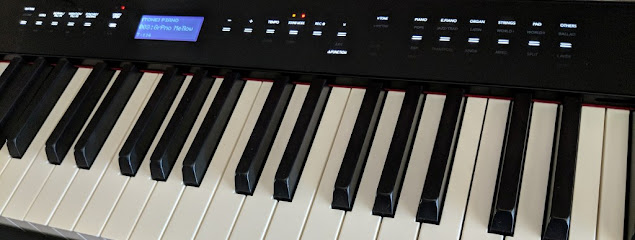 |
| Casio PX-S3100 Digital Piano
|
There is another portable digital piano under $1000 that I would recommend above the PX-S1100 and that’s its more powerful brother called the PX-S3100 at $879 internet discount price (above picture). For just under $200 more the PX-S3100 is ahead of the PX-S1100 in terms of what it can do in a number of ways.
But as far as the PX-S1100 goes, if what you have learned about it here seems like it may be the right choice for you and you mostly want to focus on the piano playing experience and/or just cannot stretch your budget any further, this PX-S1100 piano is going to be hard to beat at its normal $699 discount price, so I definitely recommend it. Please click on the following link to read my review of the Casio PX-S3100 to learn more about it: PX-S3100 Review
If you want more info on new digital pianos and LOWER PRICES than internet discounts, please email me at tim@azpianowholesale.com or call direct at 602-571-1864.
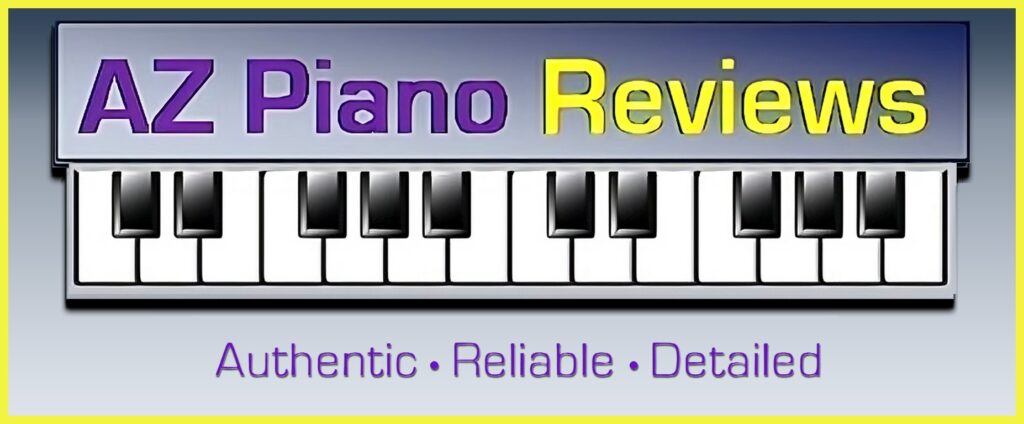
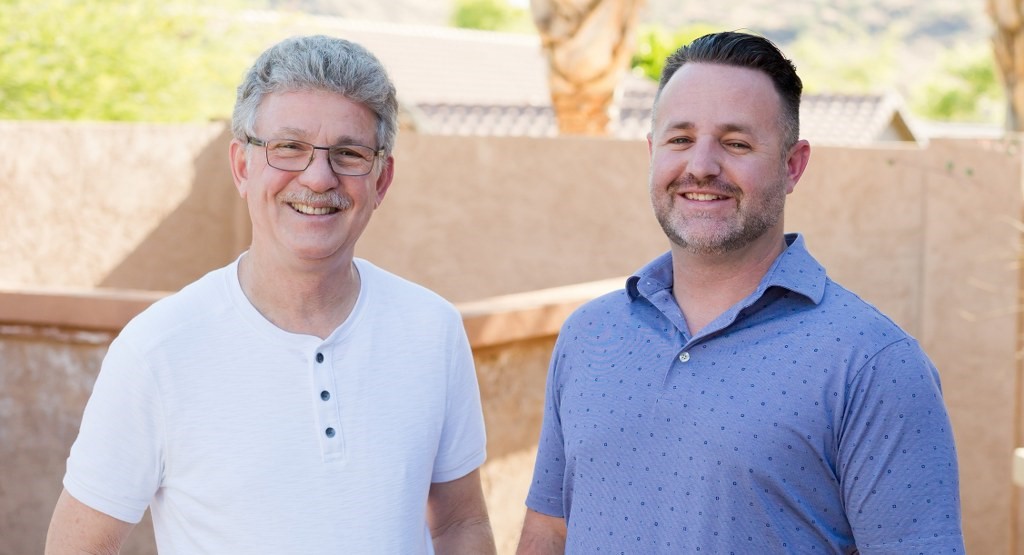

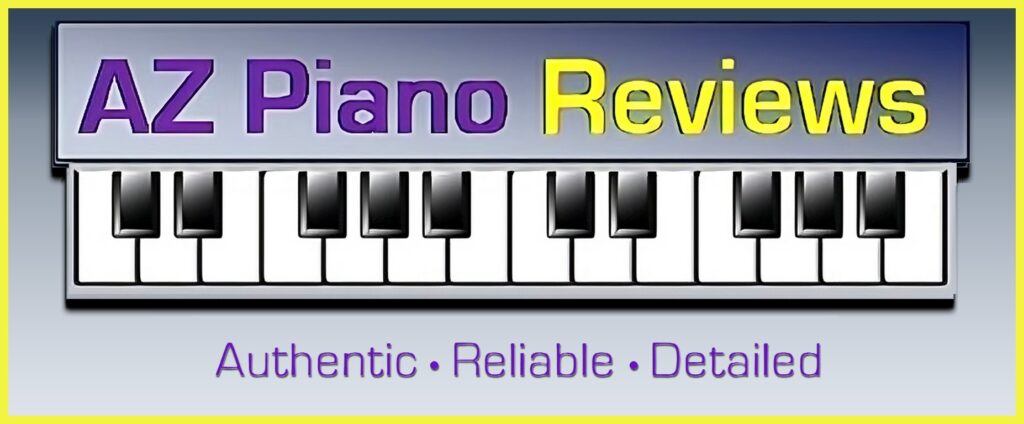


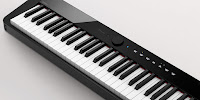
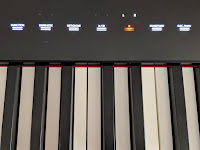
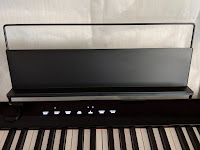
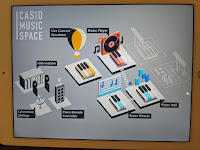
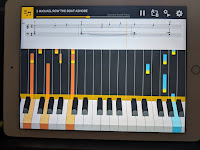
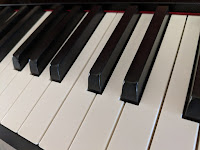
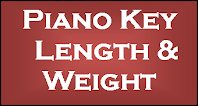
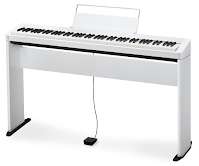
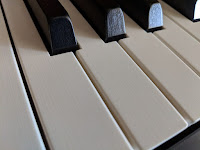
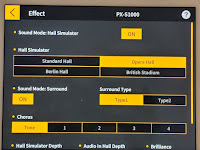

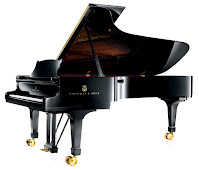
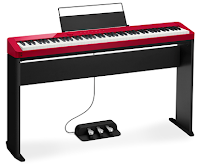



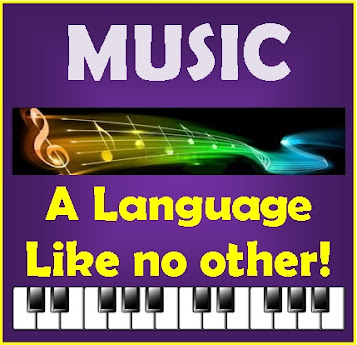
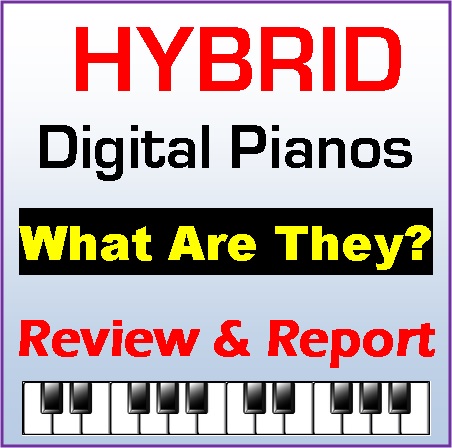
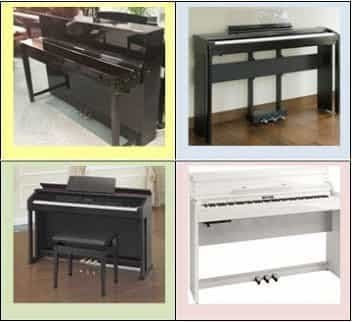
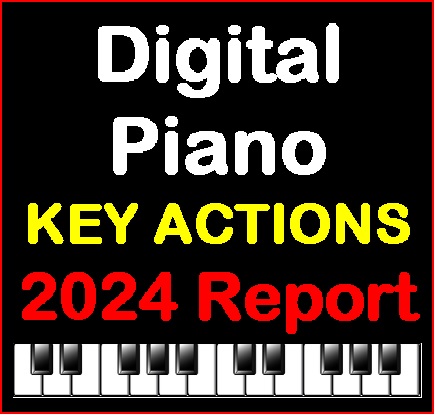

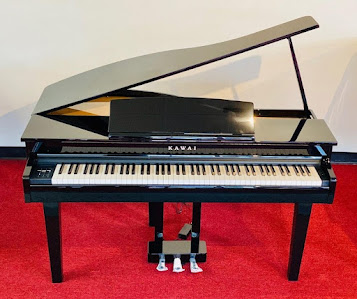
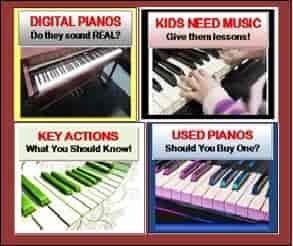
I agree with your comments about the PX-S3000. It is indeed excellent and worth the extra $.
Hi Tim,
Is this CASIO PX-S1000 ($599) better than YAMAHA P-125 ($599) and KAWAI ES110 ($699)?
I've heard that the main piano sound of the PX-S1000 is the "Hamburg Grand" of the CASIO Celviano GP-300/GB-500. Is this true?
The new Casio PXS1000 is not necessary "better" because there are different musical and piano playing needs out there. However, for $599 current discount price on that model right now in my opinion it definitely cannot be beat…it's a matter of personal preference. Nevertheless, I think I made a fairly compelling case of why the PXS1000 may be the better choice in its price range.
If I’m looking for a digital keyboard solely for the reason that I want pick up again playing the piano, would you recommend Kawai ES110 or Casio PX S1100?
Hi,
I have been comparing Roland FP-30x and PX s1100. While I understand Roland comes with a list of 40++ rhythms in the Piano every day app, I cant seem to confirm whether does Casio have rhythms as well for PX S1100? Or only PX s 3100 will have this with built in 200 rhythms?
given that the Roland FP-30X is $859 US discount selling price, the Casio PX-S1100 currently at $679 is the wrong instrument comparison. You should be comparing the Casio PX-S3100 at $879 to the Roland FP-30X at $859. Then you will get the rhythm arrangements and many other features on the PX-S3100 that are not available on the Roland FP-30X.
Would you say the PX 870 would be an upgrade from the PXS1100 in terms of action and piano sounds?